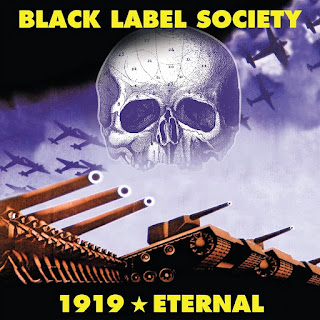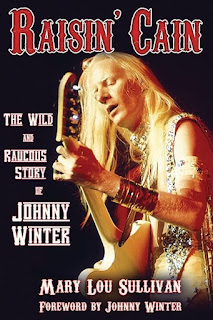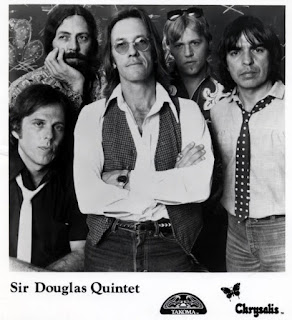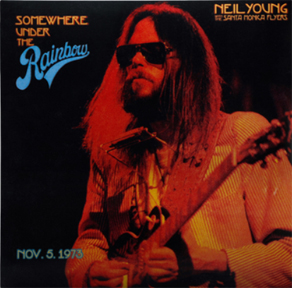While many of this first wave of hard rock heroes never made it to first base outside of their limited geographical popularity (future cult band status notwithstanding), the rare widespread success of a handful of like-minded chowderheads like Grand Funk was proof to a generation of bar-hopping teens that fame, fortune, and feminine charms were just three (loudly played) chords away. Grand Funk Railroad was hated by college-educated critics with a passion not expressed in print again until the nerf-metal era of the mid-’80s; but while these egg-headed rockcrit types were grooving to their George Harrison and Crabby Appleton albums, the boys and girls were banging their heads in rhythm to the fab new sounds of bands like Alice Cooper, Kiss, Angel, and the favorite sons of Columbus, Ohio, the Godz.
The Godz’s The Godz
Not to be confused with the hippie-dippie, psychedelic-folk noise terrorists of the same name from New York City that recorded for the ESP Records label, the Harley-humpin’ long-haired hard rock thugs from Columbus pursued a blooze-n-booze swagger that was a universe away from the lysergic fever-dreams of their namesakes. Formed by bassist/vocalist Eric Moore and guitarist Bob Hill from the ashes of the L.A. by way of Ohio band Capital City Rockets (who recorded one ill-fated LP for Elektra that is often considered one of the worst albums of ‘73), the Godz simplified hard rock into a white light blur of boogie-blues and feedback-drenched guitar chords. Although the band toured with labelmates Kiss and Angel, as well as folks like Cheap Trick and Judas Priest, the Godz never found much of an audience outside of their hometown, and all but disappeared after a pair of albums that have since achieved near-rabid cult status.
To be entirely honest, the Godz never hooked the earlobes of the young, gullible rock ‘n’ roll fan because, well…they just weren’t really very good. Yeah, all the pieces fit together like the well-oiled rock ‘n’ roll machine they brag about being on “Gotta Keep Runnin’;” guitarists Hill and Mark Chatfield (who would go on to play with Bob Seger) hit some smokin’ notes; and in Moore they had a gravel-throated grease-n-grits vocalist to mangle their too-often misogynist lyrics. And, as they say somewhere, therein lies the rub…while the band’s hearty, Vikingesque four-part harmonies were years ahead of their time, their shitty songwriting could suck a bowling ball through a vacuum-cleaner hose.
Nope, there wasn’t a decent word-wrangler in the bunch, the six original tunes on their self-titled 1978 debut split evenly among three of the four band members, Bob Hill effectively frozen out of the mix after penning the bulk of the mind-numbing tripe that made the Capital City Rockets album the critically-reviled diaper-candy that it was. Booze, bikes, broads, and “rawkin roll” are the primary subjects found in the lyrics on The Godz, and while such lofty intellectual fare strikes a chord with a bar/club audience jacked up on bottles of Old Crankcase lager (4.1% alcohol by volume) and pheromones, it loses quite a bit of gravitas when played at home on the crappy BSR turntable in your bedroom…not a great selling point with a record-buying teenaged audience trying to figure out whether disco or booger-rock is going to get them laid faster.
Musical Fusion of North-Meets-South
Still, you gotta give these Godz boys their props…by the late 1970s, when the band had its coming out party, Southern rock had pretty much begun giving up the ghost in favor of punk, funk, disco, and the heartland-bred arena-rock sounds of Seger and Springsteen. The Godz managed to create a near-perfect musical fusion of north-meets-south, combining the reckless hard rock energy of the Motor City with the bluesy vibe of Southern rock, kind of a cross between Ted Nugent and Molly Hatchet, with a healthy dose of Midwest rustbelt biker aesthetic thrown in for kicks.
The Godz starts off with the riff-happy “Go Away,” a rollicking booger-rocker that sounds like a less-distinctive Jo Jo Gunne, with squalls of ringing guitars, a neck-breaking backbeat, and a solid tho’ unspectacular bass line. Played live, the song probably kicked serious ass, and it sounds OK on the stereo today if you down a shot or two of rotgut and let the guitars carry you away on a cloud of alcohol-inspired bliss. By contrast, “Baby I Love You” is a real fart in the cookie jar, songwriter Moore ripping off about half-a-dozen tunes from better artists, not limited to Chuck Berry, Bob Seger, and the Rockets, the chorus alone pinching the infamous “rock me baby” line that was chiseled in stone sometime during the hieroglyphic era of rock ‘n’ roll, delivered here like a flaccid reminder to move your clothes from the washer to the dryer.
The next couple of tunes salvage the remainder of what was originally side one of the album, the first of ‘em, “Guaranteed,” rocking like a cross between Status Quo and Lynyrd Skynyrd, machine-gun drumbeats matched by twangy vocals and high-flying, razor-sharp guitars. The proto-metal jam “Gotta Keep Runnin’” borrows a bit of the cowbell intro from Grand Funk’s “We’re An American Band,” and pairs it with the locomotive redneck rock of Blackfoot in the creation of a pud-pounding, steel-toed, junkyard brawl of epic proportions. Moore’s spoken word bit in the middle about how we’re all “rock ‘n’ roll godz” was ridiculous even by 1970s standards but, once again, if you drop enough Quaaludes and chase ‘em down with enough rye whiskey, Moore’s absurd ramblings hit your ears like a Shakespearean soliloquy.
Candy’s Going Bad
Side two of The Godz is a mercifully short, albeit athletic three songs long, jumping off the turntable with the raucous “Under the Table.” Opening with some sort of industrial drone intro more suited to a Joy Division single, the song blasts your senses with a pyrotechnic display of twin guitars that sound like BTO but smack your medulla oblongata like Judas Priest. From the chaotic peak, the song devolves into an ear-pleasing Southern rock jam with all four instruments intertwining to great effect. “Cross Country” is a standard-issue, country-flavored rocker with screaming guitar solos and a choogling rhythm that plays well to Harley-Davidson enthusiasts on either side of the Mason-Dixon line.
The undeniable highlight of The Godz, though, is the album-closing cover of Golden Earring’s “Candy’s Going Bad.” An unlikely choice in material (every other bar band at the time was playing “Radar Love”), “Candy’s Going Bad” showcases the band’s instrumental skills while removing the “ick” factor of their self-written lyrical turds. Starting slowly with a blast-oven intro that is more industrial that anything Einstürzende Neubauten ever thought of, the song unrolls in ways both predictable and otherwise, with plenty of scorched-earth fretwork, an unusual and somewhat syncopated arrangement, a blizzard of drumbeats-and-cymbals crashing down in the back of the mix, and gangfight vocals reminiscent of the Dictators. The song rocks harder and faster and with more energy than anything else on the album, and shows what these lunkheads may have achieved if they’d had a half-decent (and literate) songwriter on the payroll.
The question, then, would be “are the Godz worth their cult band status with hard rock and heavy metal fans?” The short answer: I dunno!? The Reverend saw ‘em perform once, way back in the day, and I remember being pretty damned entertained at the time. Given my nutritious daily diet of psilocybin, pizza, Stroh’s beer, and Jack Daniels during that era, however, I couldn’t reliably bet my rockcrit reputation on the Godz’ onstage prowess.
The Reverend’s Bottom Line
The band’s self-titled debut, produced by Grand Funk drummer Don Brewer, shows moments of hard-rockin’ brilliance surrounded by trite period clichés that would be repeated ad nauseum a decade later by a younger generation of similarly shaggy-headed, Marshall-stacked cretins. That the Godz proved to be influential far beyond their meager album sales is undeniable, and while they may have rocked many a stage at the time, their trademark biker boogie-rock sound would be pursued with greater success by bands like Badlands, Jackyl, and the Black Label Society years down the road. Still, not a bad musical legacy for a bunch of guys from Columbus… (Rock Candy Records, released May 15th, 2010)
Review originally published by Blurt magazine, 2010
Buy the CD from Amazon: The Godz’s The Godz


















